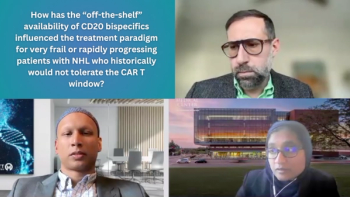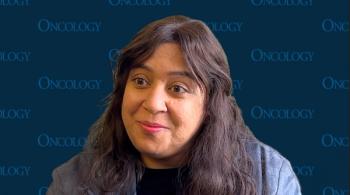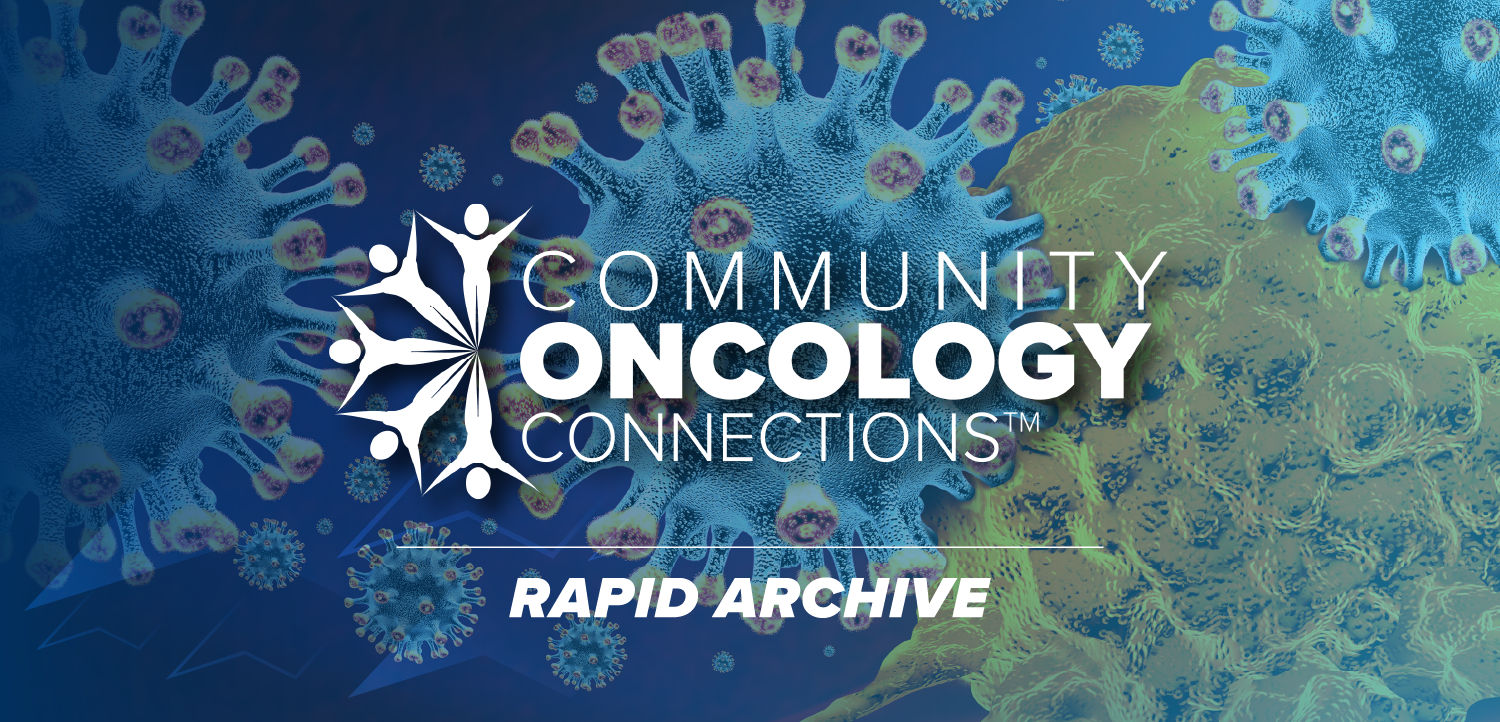
- ONCOLOGY Vol 23 No 14
- Volume 23
- Issue 14
Adult T-cell Leukemia/ Lymphoma: Complexities in Diagnosis and Novel Treatment Strategies
In this issue of ONCOLOGY, Dr. Tobinai presents a thorough and thoughtful review of the current state of the art of HTLV-related adult T-cell leukemia/lymphoma (ATLL). As described, ATLL is most prevalent in Asia, where it has also been most studied, but is also seen in patients from other HTLV-endemic areas including the Caribbean, South America, and parts of Africa. ATLL is rare in North America and Europe, representing 1% to 2% of T-cell lymphomas compared to 25% in Asia.[1]
In this issue of ONCOLOGY, Dr. Tobinai presents a thorough and thoughtful review of the current state of the art of HTLV-related adult T-cell leukemia/lymphoma (ATLL). As described, ATLL is most prevalent in Asia, where it has also been most studied, but is also seen in patients from other HTLV-endemic areas including the Caribbean, South America, and parts of Africa. ATLL is rare in North America and Europe, representing 1% to 2% of T-cell lymphomas compared to 25% in Asia.[1]
The rarity of this disease in Western countries makes it all the more important for oncologists in low-prevalence regions to consider the diagnosis in patients with T-cell lymphomas who have emigrated from endemic areas. As noted, the latency period between HTLV infection and development of ATLL is quite long, so care should be taken to elicit the history of a patient emigrating from or traveling in an endemic region decades before lymphoma diagnosis. Further, other T-cell lymphomas may have clinical and pathologic appearances similar to those of ATLL, and thus, the diagnosis may be missed if not considered and the HTLV serology not checked.
Differential Diagnosis and Prognosis
The pathologic differential diagnosis for ATLL includes peripheral T-cell lymphoma unspecified (PTCLu), anaplastic large cell lymphoma (ALCL), cutaneous T-cell lymphomas (CTCL), and angioimmunoblastic T-cell lymphoma (AITL). PTCLu is the most common T-cell lymphoma in North America and may be pathologically indistinguishable from ATLL. If a clinical history of emigrating from an endemic region is not elicited, the diagnosis of ATLL may be overlooked, particularly in the lymphomatous subtype where the telltale circulating “flower” cells are absent. The converse may be true in endemic areas, where patients may present with rarer T-cell lymphomas and be incidentally seropositive for HTLV-1. Testing of tumor tissue for the presence of the HTLV-1 virus would help clarify the pathogenesis in such cases, but this is not routinely clinically available.
ATLL may also be overlooked as the diagnosis in a CD30-positive T-cell lymphoma in favor of a diagnosis of ALCL, as CD30 may be expressed by the malignant cells in both diseases. However, ATLL cells will be negative for anaplastic lymphoma kinase (ALK), making ATLL a consideration only in ALK-negative cases of presumed ALCL.[2] AITL represents 16% of T-cell lymphomas in North America and 29% in Europe, and should also be considered in the differential diagnosis of ATLL clinically, given that both can present with hypercalcemia, diffuse lymphadenopathy, and skin involvement.
ATLL continues to carry a poor prognosis with standard chemotherapy. Recently, the International Peripheral T-cell Lymphoma Project reported on 126 patients with acute or lymphoma-type ATLL, which included 20% of patients from outside endemic HTLV-1 areas; the median overall survival was less than 1 year.[3] Given the poor prognosis with standard therapies, allogeneic stem cell transplantation should be considered in eligible ATLL patients with available donors. Small series have shown evidence for a graft-vs-leukemia effect and a signal of efficacy.
Novel Therapies
Novel treatment approaches targeting the HTLV-1 virus itself may offer additional benefit beyond traditional chemotherapy, and as discussed by Dr. Tobinai, a meta-analysis of interferon-alpha with zidovudine appeared promising. More recently, the same group reported the results of a prospective phase II trial of the combination of arsenic trioxide (Trisenox), interferon-alpha, and zidovudine in newly diagnosed chronic ATLL.[4] Arsenic was added based on preclinical data showing synergy with interferon and induction of proteosomal degradation of the HTLV-1 oncoprotein Tax and reversal of NF-kappaB activation. All 10 patients on this trial achieved a response, with 7 complete remissions. The role of antiviral therapy warrants ongoing investigation.
Dr. Tobinai highlights emerging novel therapies including monoclonal antibodies targeting CD25, CD52, and CCR4. CD52 is heterogeneously expressed by T- and B-cell lymphomas,[5] but ATLL is reliably CD52-positive, prompting consideration of alemtuzumab (Campath) therapy. Though alemtuzumab may induce responses in relapsed/refractory T-cell lymphomas,[6] serious infectious complications are common and there is little efficacy data specific to ATLL beyond preclinical models and case reports.[7,8] Similarly, denileukin diftitox (Ontak, IL-2 bound to diphtheria toxin) shows activity in second-line treatment of T-cell lymphomas.[9] The uniform CD25 expression by ATLL makes this an appealing therapeutic candidate in this disease, though nothing more than case reports presently support its use.[10,11] Emerging data validate the use of other novel US Food and Drug Administration–approved agents in relapsed T-cell lymphomas, including the novel antifolate pralatrexate (Folotyn), the proteasome inhibitor bortezomib (Velcade), and deacetylase inhibitors such as romidepsin (Istodax), all of which demonstrate efficacy in other T-cell lymphomas but with only case reports in ATLL.[12-15] Despite enthusiasm for these and other novel agents in T-cell lymphomas, data for all of them are minimal in ATLL. Their use is optimally performed in the context of a clinical trial where available.
Financial Disclosure: The authors have no significant financial interest or other relationship with the manufacturers of any products or providers of any service mentioned in this article.
Articles in this issue
almost 16 years ago
CYP2D6 Testing in Breast Cancer: Ready for Prime Time?almost 16 years ago
CYP2D6 Testing for Breast Cancer Patients: Is There More to the Story?almost 16 years ago
Recurrent Urothelial Carcinoma With Pulmonary Metastasisalmost 16 years ago
Hepatocellular Carcinoma: The Search for Innovative Adjuvant Therapiesalmost 16 years ago
Getting a Handle on Posttransplant Recurrence of HCCalmost 16 years ago
Survivin(g) Adult T-cell Leukemia/Lymphomaalmost 16 years ago
Mediterranean DietNewsletter
Stay up to date on recent advances in the multidisciplinary approach to cancer.


















































































